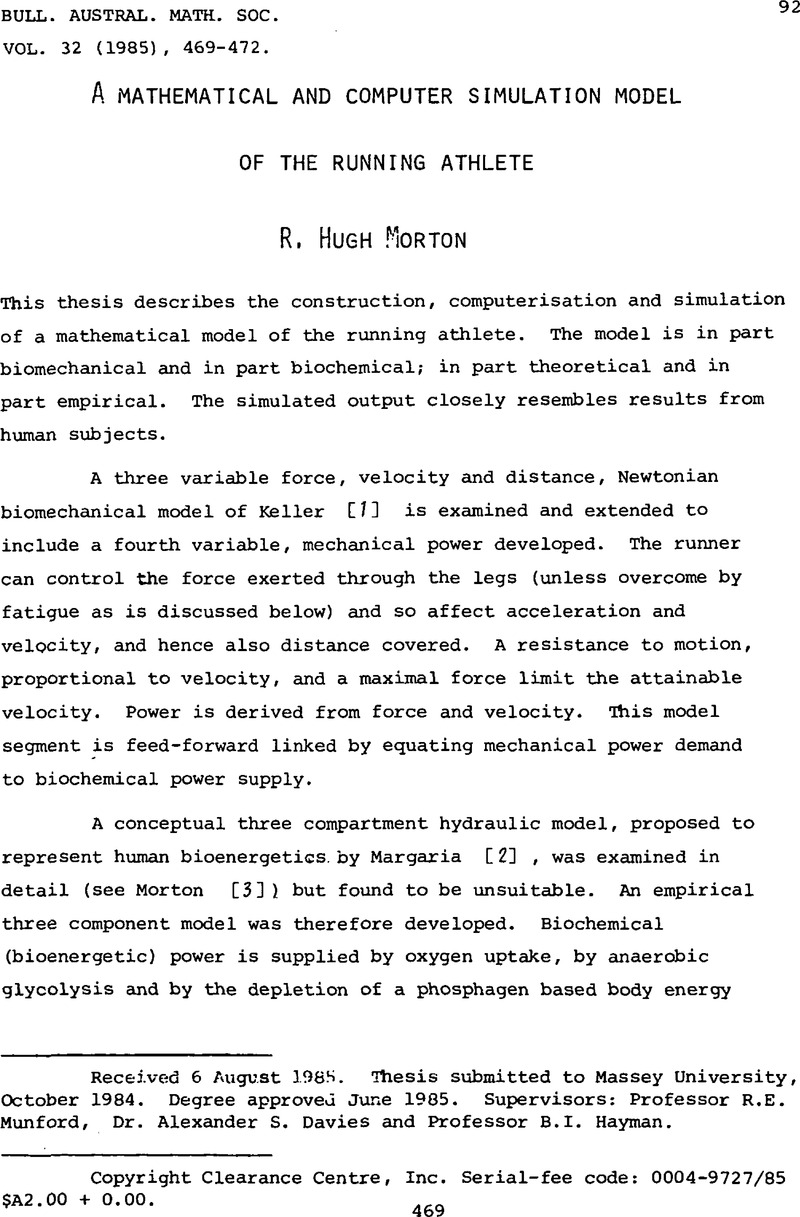No CrossRef data available.
Article contents
A Mathematical and computer simulation model of the running athlete
Published online by Cambridge University Press: 17 April 2009
Abstract
An abstract is not available for this content so a preview has been provided. As you have access to this content, a full PDF is available via the ‘Save PDF’ action button.

- Type
- Abstracts of Australasian phD Thesis
- Information
- Bulletin of the Australian Mathematical Society , Volume 32 , Issue 3 , December 1985 , pp. 469 - 472
- Copyright
- Copyright © Australian Mathematical Society 1985
References
[1]Keller, J.B., “A theory of competitive running”, Physics Today 26 (1973), 43–47.CrossRefGoogle Scholar
[2]Margaria, R., Biomechanics and energetics of muscular exercise, Oxford Univeristy Press, Oxford, 1976.Google Scholar
[3]Morton, R.H.. Solution to Margaria's model of the energy processes during muscular exercise. Occasional Publication #13, Department of Mathematics and Statistics, Massey University, Palmerston North 1984.Google Scholar
[4]Morton, R.H., “Two-dimensional short-term model of oxygen uptake kinetics”, J. Appl. Physiol. 58 (1985), 1736–1740.CrossRefGoogle ScholarPubMed
[6]Zouloumian, P. and Freund, H., “Lactate after exercise in man: II, mathematical model, Eur. J. Appl. Physiol., 46 (1981), 135–147.CrossRefGoogle ScholarPubMed
[7]Zouloumian, P. and Freund, H., “Lactate after exercise in man: III, properties of the compartment model, Eur. J. Appl. Physiol., 46 (1981), 149–160.CrossRefGoogle ScholarPubMed


